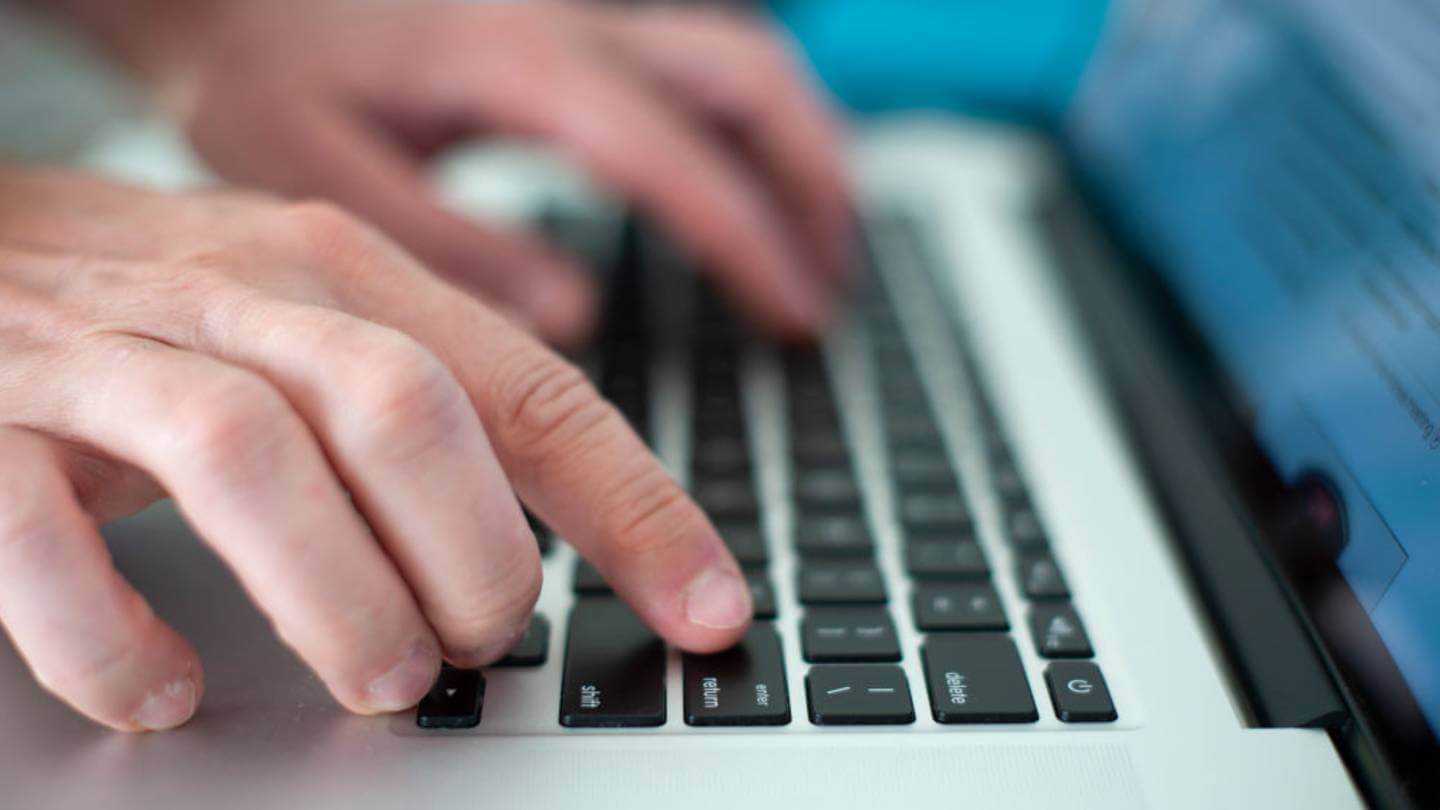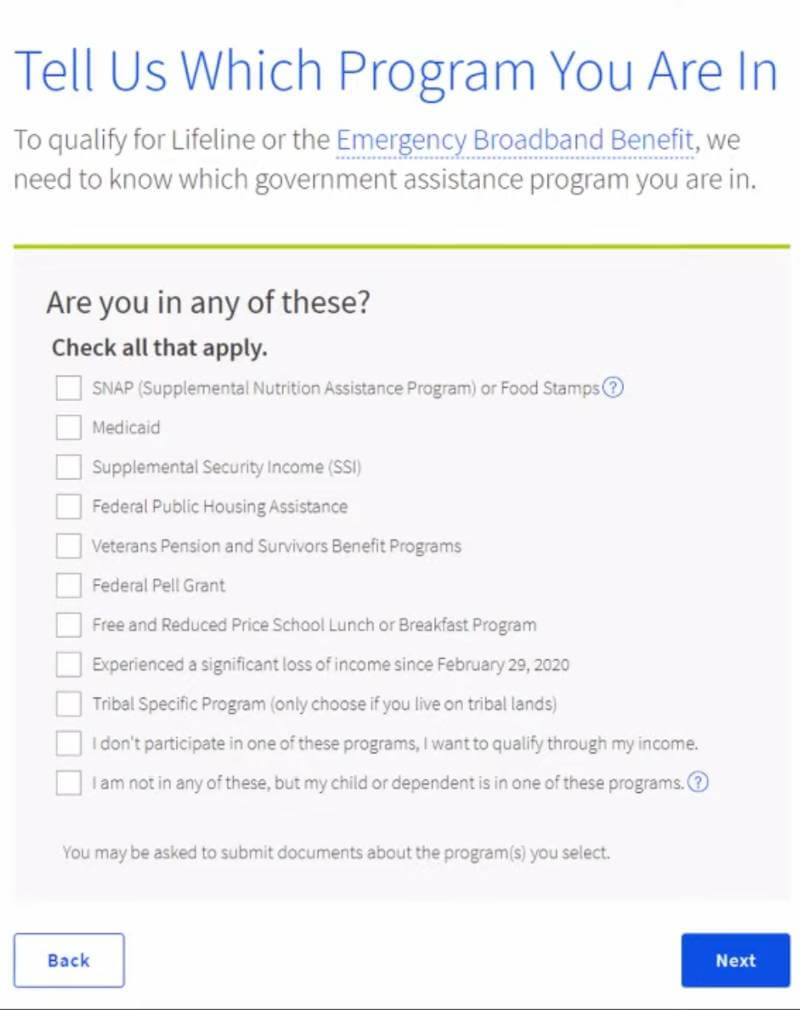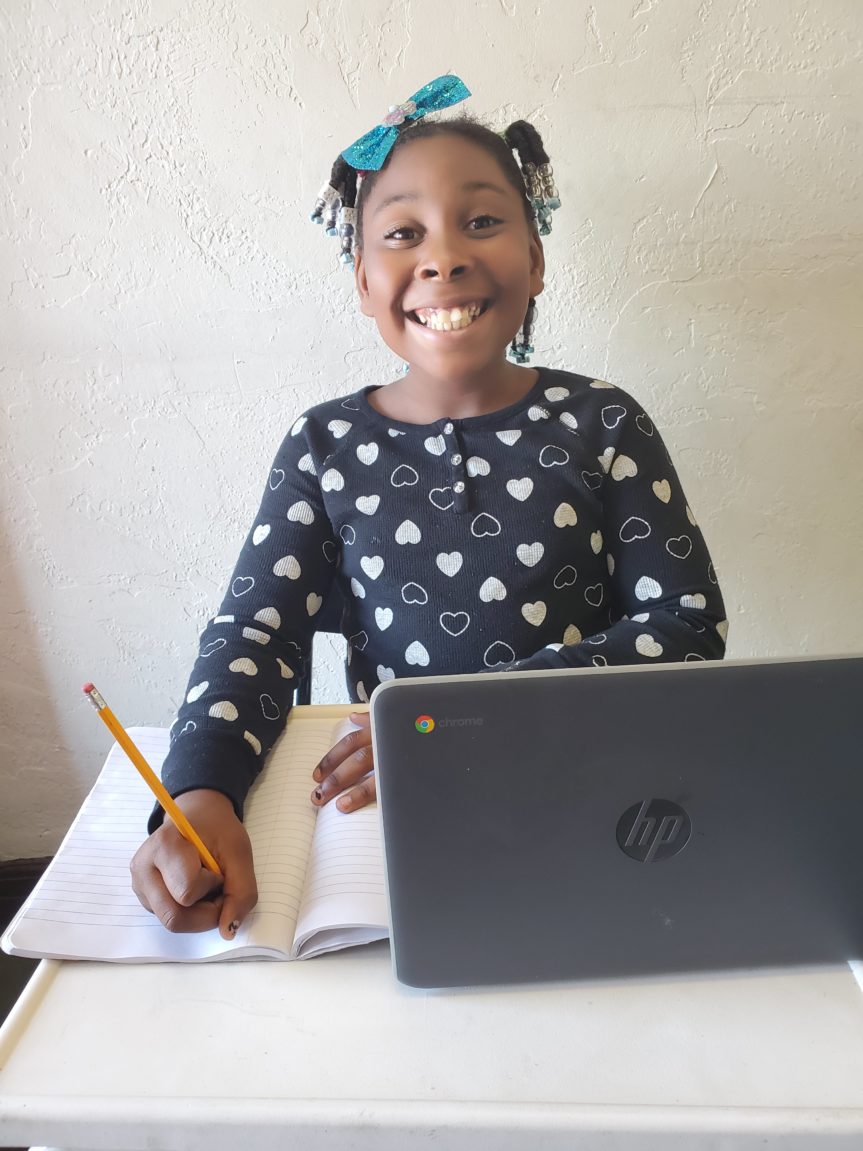A guest post from Joe Supan and Allconnect
May 12, 2021
The FCC’s Emergency Broadband Benefit launched on May 12, 2021. Here’s how to find out if you’re eligible.

At Allconnect, we work to present quality information with editorial integrity. While this post may contain offers from our partners, our opinions are our own. Here’s how we make money.
- Qualifying households get $50/mo. towards internet ($75/mo. for households on Tribal lands)
- All major internet providers except HughesNet and Viasat are participating
- Program also includes $100 off a computer or tablet, but Cox and Windstream are only national providers currently participating in this benefit
- The program will end when the fund runs out of money or six months after the Department of Health and Human Services declares an end to the COVID-19 emergency, whichever comes first
The Emergency Broadband Benefit is now accepting applications.
You can apply directly through your internet provider, by mail or online through the USAC. If you apply online, you might need to wait a minute or two for the page to load. Once you’re in, the application process takes about 10 minutes.Apply for the Emergency Broadband Benefit online
Some American families may soon see a bit of relief from the cost of internet service. A new government program aims to help qualifying households get online by providing monthly financial credits for broadband service, as well as a computer discount.
On Feb. 25, the Federal Communications Commission (FCC) agreed to implement an Emergency Broadband Benefit program (EBB program) that will help subsidize the cost of internet service for qualified low-income households. The program launched on May 12, 2021 and will cost $3.2 billion.
What does the Emergency Broadband Benefit program provide?
The program will provide qualifying households with a $50 credit on their internet bill each month. This credit increases to $75/mo. for those who live on Tribal lands. All eligible households can also get up to $100 off a laptop, desktop computer or tablet, but they’ll have to pay between $10 and $50 themselves, and they’ll have to purchase it through their internet service provider (ISP). Unfortunately, Cox and Windstream are the only major providers that have opted in to the device portion of the benefit so far.
This is a temporary program to address the COVID-19 pandemic. The benefit will end when the fund runs out of money or six months after the Department of Health and Human Services declares an end to the COVID-19 emergency, whichever comes first.
Once the program opens, you’ll be able to apply through your ISP or the Universal Service Administrative Company (USAC), which oversees the Lifeline and EBB programs. The FCC will then verify that you’re eligible for the program and the $50/mo. discount will be applied to your internet bill. From there, the FCC will reimburse your internet provider directly. According to the FCC, this is the nation’s “largest-ever program” to help connect low-income households to affordable internet.
“This is a program that will help those at risk of digital disconnection. It will help those sitting in cars in parking lots just to catch a Wi-Fi signal to go online for work,” said acting FCC Chairwoman Jessica Rosenworcel. “It will help those lingering outside the library with a laptop just to get a wireless signal for remote learning. It will help those who worry about choosing between paying a broadband bill and paying rent or buying groceries.”
Who qualifies for the Emergency Broadband Benefit?
You can get the FCC’s Emergency Broadband Benefit program if you meet one of the following qualifications:
- Your gross household income is at or below 135% of federal poverty guidelines
- You already qualify for a program like Lifeline, Supplemental Nutrition Assistance Program (SNAP), Medicaid or a federal Pell Grant
- You experienced a substantial loss of income since Feb. 29, 2020 due to job loss or furlough, as long as your household income for 2020 was at or below $99,000 for single filers and $198,000 for joint filers
- You are approved for the free or reduced price school breakfast/lunch program, including through the USDA Community Eligibility Provision
- You live on Tribal lands
Remember, you only need to meet one of these requirements to qualify for the $50/mo. internet benefit.
Your income is at or below 135% of federal poverty guidelines
If your gross household income in 2020 — the total income for everyone living in your home before taxes — was at or below 135% of federal poverty guidelines, you’ll qualify for the EBB program. Here’s what those cutoffs look like in every state:
| Household size | 48 contiguous states, DC and territories | Alaska | Hawaii |
| 1 person | $17,388 | $21,722 | $20,007 |
| 2 people | $23,517 | $29,390 | $27,054 |
| 3 people | $29,646 | $37,058 | $34,101 |
| 4 people | $35,775 | $44,726 | $41,148 |
Show more
Source: U.S. Department of Health & Human Services Poverty Guidelines for 2021
If your gross household income is below the numbers listed above, you’ll be able to get the $50/mo. internet subsidy as soon as the FCC launches the program on May 12.
You participate in a qualifying program
In addition to the income eligibility, you can also qualify for the Emergency Broadband Benefit if you’re already enrolled in an eligible program. Here are the programs that will get you access to the subsidy:
- Lifeline program: You don’t need to submit a new application to use the EBB program if you already receive Lifeline benefits.
- Approved Service Provider Low-Income or COVID-19 Relief Program: If your internet provider already has a COVID-19 relief program, they can apply to automatically enroll all participants in the Emergency Broadband Benefit.
- Supplemental Nutrition Assistance Program (SNAP): You can check out a complete list of SNAP names in every state to see if you’re enrolled. Anyone enrolled in a Nutrition Assistance Program in Puerto Rico, American Samoa or the Northern Mariana Islands is also eligible.
- Medicaid: Anyone enrolled in Medicaid is eligible for the EBB program.
- Free and Reduced Price School Lunch Program or School Breakfast Program: If there’s a student in your household who received free or reduced-price lunches during the 2019-2020 or 2020-2021 school year, you’ll qualify for the EBB. Even if your child’s school has been fully remote for the past year, you’re still eligible for the EBB as long as they’d been receiving it when they were going into the building.
- Pell Grant: Students awarded a Pell Grant in the current academic year are eligible.
- Supplemental Security Income (SSI)
- Federal Public Housing Assistance (FPHA)
- Veterans and Survivors Pension Benefit
- Bureau of Indian Affairs General Assistance
- Tribally-Administered Temporary Assistance for Needy Families (TANF)
- Tribal Head Start
- Food Distribution Program on Indian Reservations (FDPIR): This is a federal program run by the Department of Agriculture’s Food and Nutrition Service. According to the USAC, “award letters are generally provided by either an Indian Tribal Organization or another state agency.” Check this list of state agency contacts for FDPIR for more information.
It’s a long list. But keep in mind, you only need to participate in one of the programs above to qualify for the EBB program.
Loss of income during the COVID-19 pandemic
The FCC says anyone who’s experienced a “substantial loss of income” due to job loss or furlough since Feb. 29, 2020, will qualify for the EBB program. The only requirement is that their household income for 2020 was at or below $99,000 for single filers and $198,000 for joint filers.
Enhanced Tribal Benefit
Anyone who lives on Tribal lands and meets one of the above qualifications can receive a discount of $75/mo. on their internet bill. Learn more about what low-income internet benefits are available to you
How to apply for the Emergency Broadband Benefit
Fortunately, many eligible customers will be approved automatically through other programs. If you’re already a Lifeline user, you’ll have to opt-in to the EBB with your existing provider or request service from a new provider. The USAC recommends talking to your Lifeline provider about the internet services available to you or contacting an internet service provider participating in the program.
What if you’re not enrolled in Lifeline, but have been using a low-income or COVID-19 relief program with your internet provider? In that case, you still might be approved automatically if the provider’s gained FCC authorization. You’ll have to contact your provider directly for more information.
Check with your internet provider
If you already have home internet service, the FCC recommends contacting them directly to access the EBB. They can submit your application through the national verifier or their own eligibility process.
Apply online, by mail or through your internet provider
When the program opens up on May 12, you can apply online at GetEmergencyBroadband.org. The online portal will accept applications in both Spanish and English. You’re likely to receive immediate approval or a request for more documentation if you go this route.

You can also print an application (or call 833.511.0311 to have one mailed to you) in English, Spanish and eight additional languages and send it to the following address along with proof of eligibility:
Emergency Broadband Support Center
PO Box 7081
London, KY 40742
The FCC recommends that you “write clearly using black ink and capital letters” on your application form. Your application will still be processed if you don’t, but it should ensure a quicker response. You’re also encouraged to include an email address with your mailed application, so that USAC can contact you quickly if they need more information.
Finally, you can apply through your internet service provider by asking them if they participate in the EBB program. They can walk you through USAC’s verification process, or they may have the approval to submit applications on their own. Once you’re approved, you can choose a provider near you that offers EBB discounts and sign up for service. Learn more about how to apply for the EBB program
You’ll need to provide documentation
No matter how you apply, you’ll have to include some documentation that proves your eligibility. If you qualify through one of the programs above, you’ll need to submit a letter or official document from the last 12 months (or with a future expiration date). These can be things like benefit award letters, approval letters, statements of benefits or benefit verification letters.
If you qualify through the income requirements, you’ll need to show your annual income. The following documents will work for this kind of verification:
- Prior year’s state, federal or Tribal tax return
- Current income statement from your employer or a paycheck stub
- A Social Security statement of benefits
- Veterans Administration statement of benefits
- Unemployment or Worker’s Compensation statement of benefits
- Divorce decree, child support award, or a similar official document showing your income
- A retirement/pension statement of benefits
To learn more about what types of documentation you’ll need to apply, check out the USAC’s in-depth guide.
Which internet service providers are participating in the program?
| Provider | Participating in EBB | Offering device discount |
| AT&T | ✔ | ✘ |
| Buckeye Broadband | ✔ | ✘ |
| CenturyLink | ✔ | ✘ |
| Cox | ✔ | ✔ |
| Frontier | ✔ | ✘ |
| HughesNet | ✘ | ✘ |
| MCTV | ✔ | ✘ |
| Mediacom | ✔ | ✘ |
Show more
Most internet service providers are open to the EBB program. The only major exceptions we could find were HughesNet and Viasat. While these providers aren’t currently providing the Emergency Broadband Benefit, they may still opt to participate in the program before it opens. Unfortunately, Cox and Windstream are currently the only national providers including the $100 device discount, but a number of smaller, regional providers are as well.See a complete list of participating providers
What if there are no service providers in my area participating in the EBB?
Unfortunately, you’re mostly out of luck if none of the providers around you are participating. You can still use the benefit with a mobile provider like T-Mobile or Tracfone, but these are generally much slower and have lower data caps. You would also have to use a plan with mobile hotspot capabilities to connect devices like laptops and tablets.
Emergency Broadband Benefit program FAQs
When will the Emergency Broadband Benefit be available?
Eligible households will be able to apply for the Emergency Broadband Benefit beginning on May 12, 2021.
Is the Emergency Broadband Benefit permanent?
Can I get the Emergency Broadband Benefit if I already receive a Lifeline discount?
Do I need my Social Security number to apply for the Emergency Broadband Benefit?
Can I get the Emergency Broadband Benefit if I live on Tribal lands, but am not a member of the tribe?
Does the Emergency Broadband Benefit apply to TV and internet bundles?
Can I still get the EBB if I received unemployment benefits during the pandemic?
Are residents in assisted living facilities and nursing homes eligible?
Are people experiencing homelessness eligible for the benefit?
Does the EBB cover installation and equipment fees?
Which providers are offering the $100 discount on devices?


Connecting a lot of devices?
Compare internet and TV providers for the power you need to stay connected. Shop internet and TV on Allconnect, for free.Shop providers
Written by:Joe Supan
Senior Writer, Wireless & Streaming Content
Joe oversees all things wireless and streaming for Allconnect. His work has been referenced by McAfee, Fox network and more. He has utilized thousands of data points to build a library of metrics to help users n… Read more
Edited by:Robin Layton
Editor, Broadband & Wireless Content

